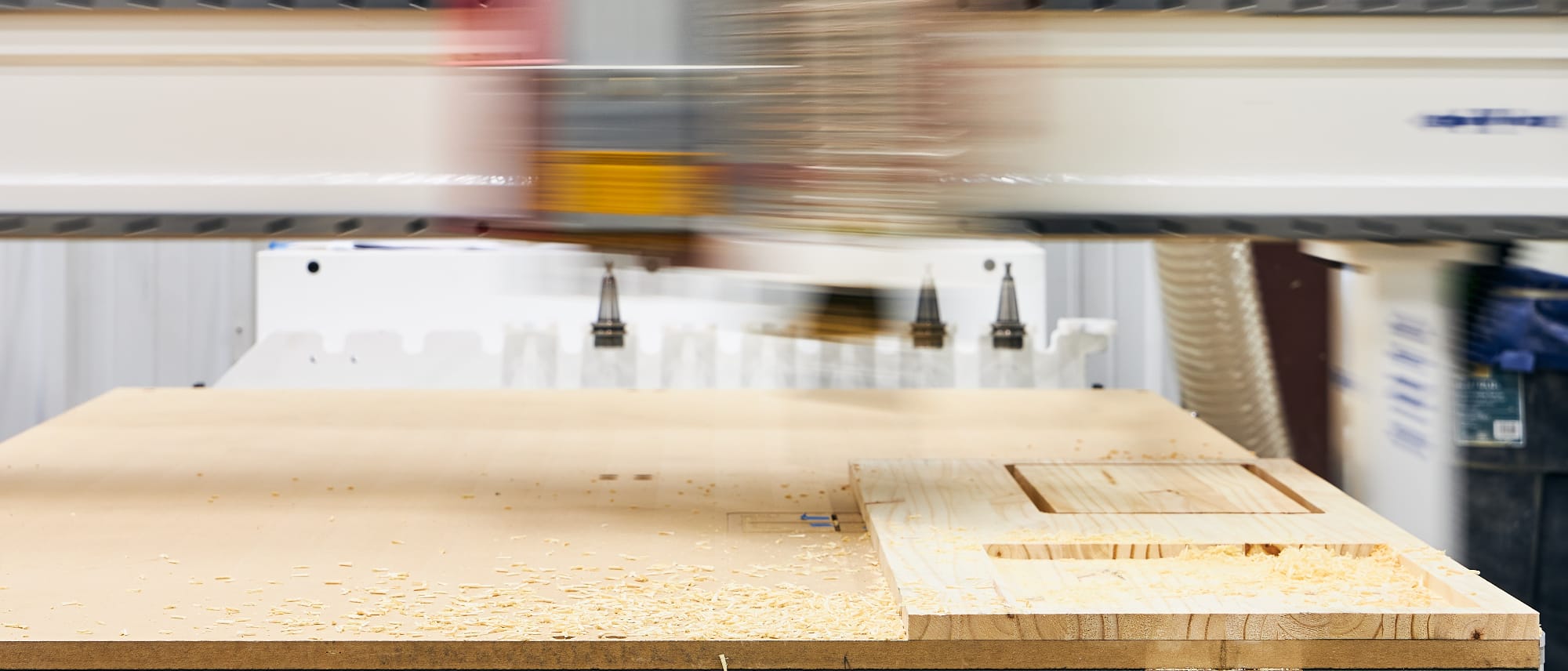Diversified Machine Systems (DMS) has been in the sign-making industry for over 30 years. In that time, sign manufacturers have come to us with more unique needs than we can count. They are looking for a CNC machine that is rigid and repeatable, a machine that will get the job done every time—no matter what material they’re working with.
When it comes to making signs, materials have a huge impact on the manufacturing process, as well as the end product. We’ve found that a basic familiarity with the strengths and weaknesses of each is a must. Here are some of the most common materials used in the sign-making industry, along with some pointers to get you started with machining.
Wood
Wood has been used to make signs for millennia, but the technology has come a long way from an old man whittling in his shed. A CNC router can make two- or three-dimensional cuts, and it can be programmed to etch, engrave, or carve with more precision than the finest craftsperson. Wood may be a more finicky material than most, but the traits that make it difficult to work with are also what give wood its unique character.
When using a CNC machine for woodcutting, it is important to consider whether you’re working with a softwood or hardwood. Softwoods like pine, fir, and spruce require sharp tools and slower feed rates to prevent splintering. Hardwoods like cherry, oak, and maple are denser and therefore more durable, but they will require more cutting force. With both of these options, it is important to pay attention to the wood’s natural grain pattern and to choose the right cutting direction to avoid harming your surface finish.
Wood can be less forgiving than other materials, with knots and other natural inconsistencies in the grain leaving the potential for mistakes. Burn marks and chip marks are another risk of woodcutting, and high moisture content in the wood can lead to faster tool-wear. A manufacturer who is intentional about tool paths, lubrication, and feed rates can go a long way toward mitigating these problems and creating a beautiful product.
Plastics
Plastics are a popular option for signage and come in a variety of configurations. With a great strength-to-weight ratio and good durability—especially when UV-stable plastics are used for outdoor purposes—this material lasts a long time without the wear-and-tear of other materials. When a classic CNC machine is enhanced with additive manufacturing, plastics are among the most versatile materials for signs.
Plastics come in all shapes and sizes, but here are two options that every sign-maker should be aware of:
- Polyvinyl Chloride (PVC) is a plastic that is easy to print and engrave and therefore great for signs. Its unique properties can mimic wood, while its lack of organic matter means that it requires less maintenance. However, PVC is best reserved for indoor uses. When it comes to PVC and other alternative plastics, Graphics Pro notes, “PVC foam presents a good edge finish and is easy to print and engrave, while polycarbonate, another type of plastic, offers strength and great machining characteristics… PETG is known for being easy to thermoform for 3D signage and can be digitally printed.”
- Acrylics are another great option for sign-makers. Acrylic is a lightweight plastic with good scratch-resistance, and its translucence offers some unique possibilities for signs. It can mimic some of the qualities of glass and is a good choice if you want to incorporate light. However, acrylics can be brittle. To avoid shattering, manufacturers should note the wall thickness in acrylic components.
Aluminum and Aluminum Composites
Aluminum is a great solution for signs that need to last a long time without rusting or deteriorating. Because it is a ductile metal, aluminum runs the risk of warping with changes in temperature, but this can be overcome by choosing the right CNC machine, speed, and feed rate. Also, most aluminum composites have been designed to undergo high temperatures without distortion.
As MellowPine notes, “Aluminum machining requires a lot more rigidity than cutting wood or plastic. A good CNC router for milling aluminum should be rigid enough to deliver high cutting force without compromising the quality of the cut.”
The DMS Freedom Line has proven an effective solution for aluminum signs—as well as signs made of wood, plastics, composites, and more. This is a universal platform with the rigidity and repeatability that sign-makers need, and we’re proud to say that sign-makers have been relying on it for decades. No matter the material, the DMS Freedom Line is up to the task.


